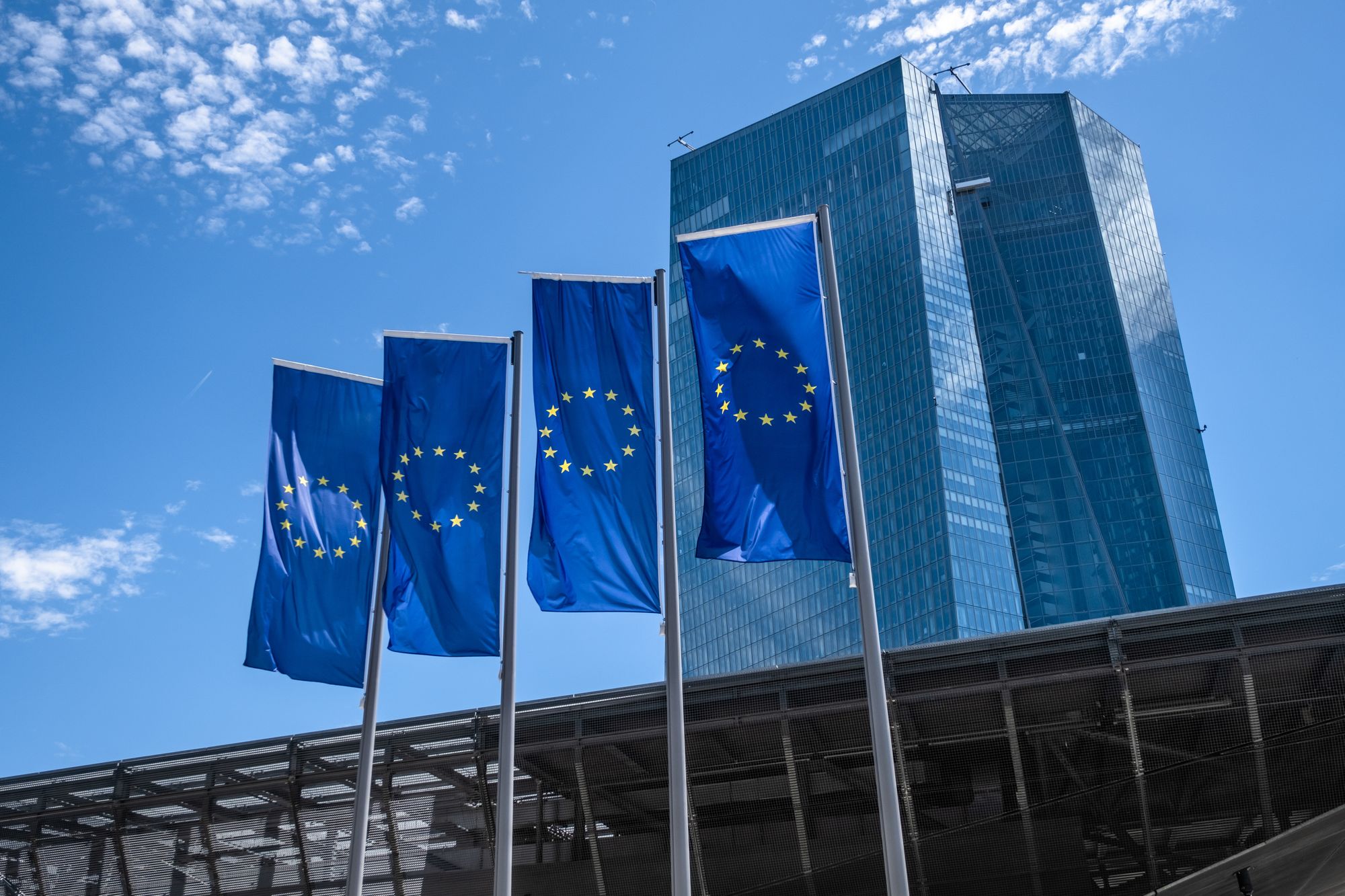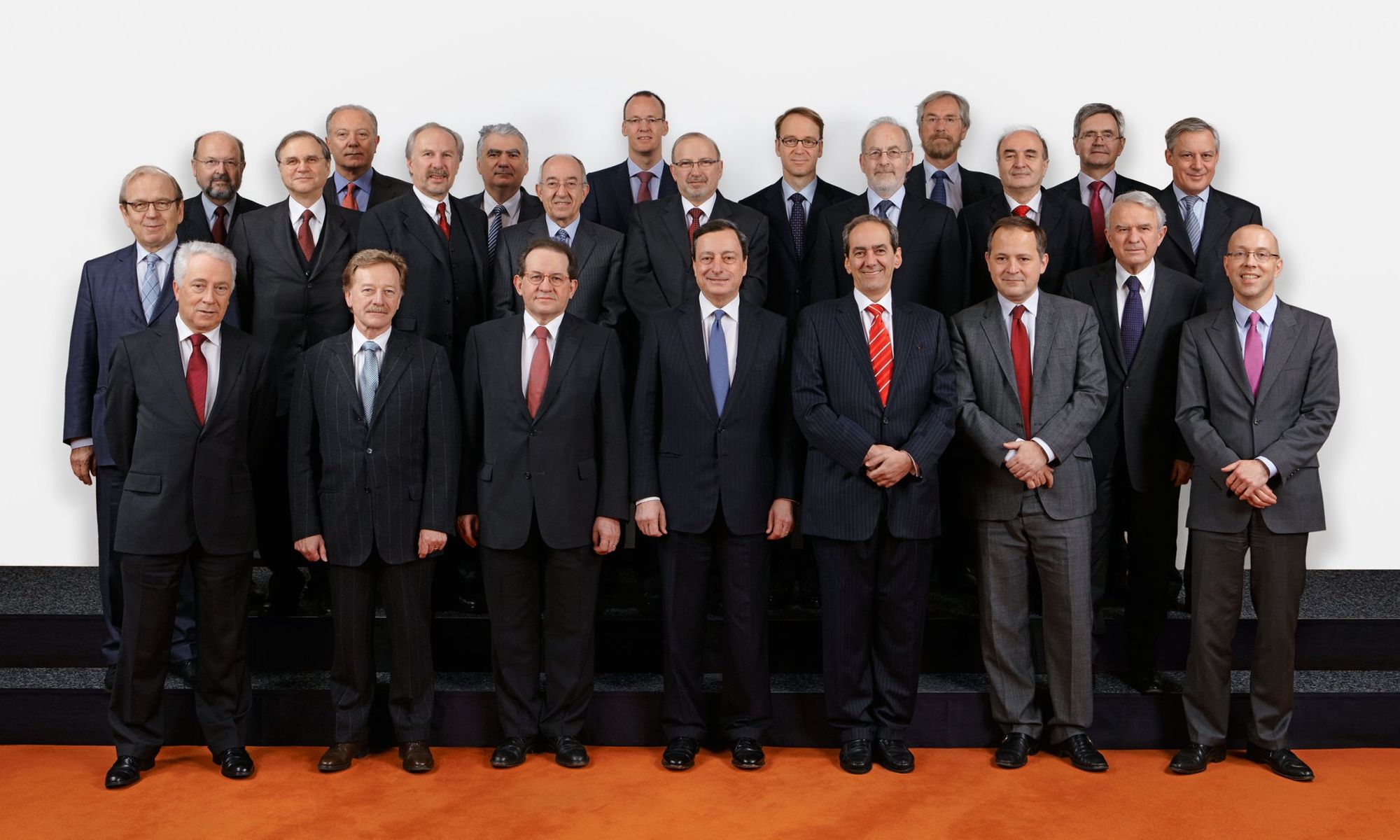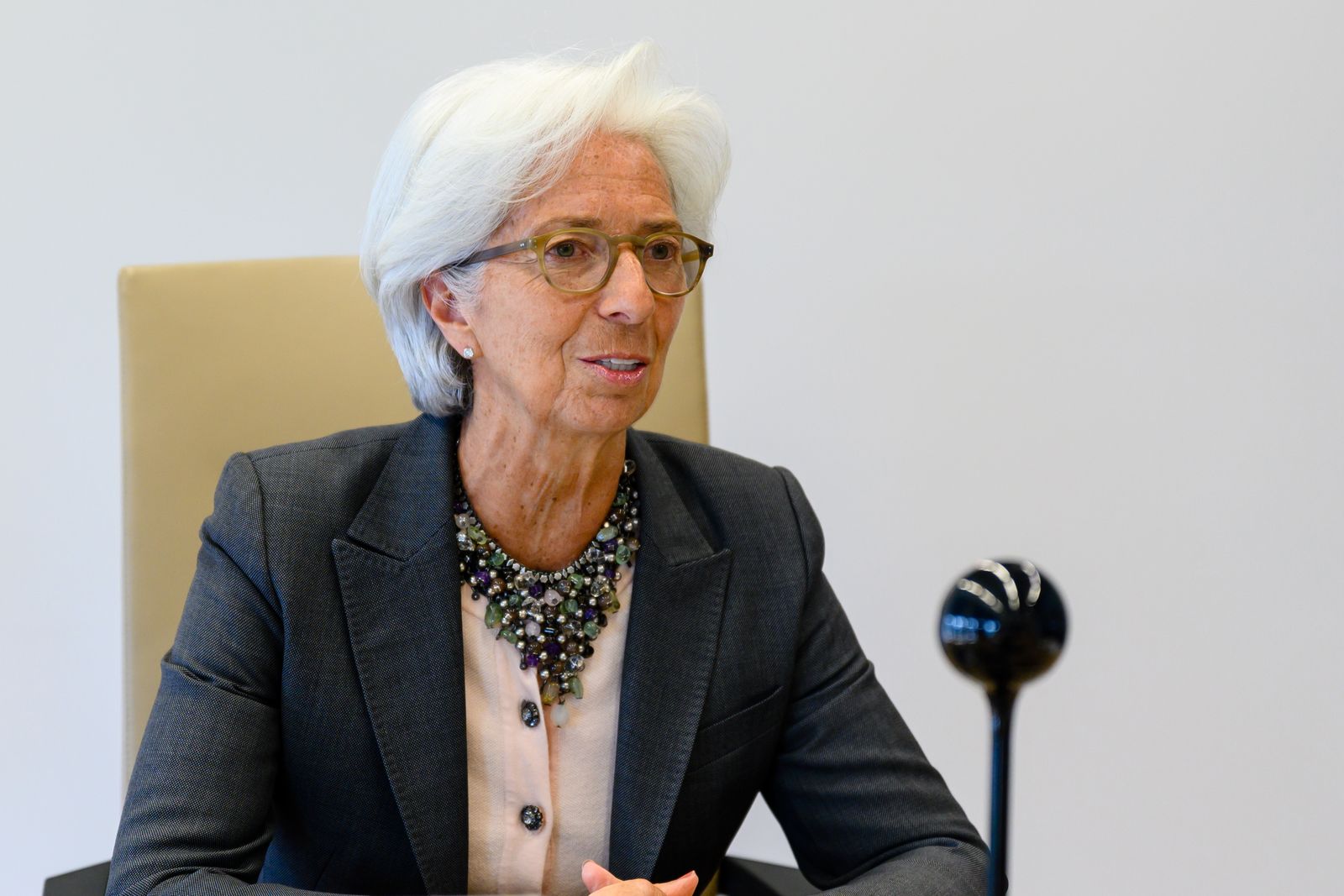Christine Lagarde is the President of the European Central Bank (ECB). Previously, she served as the Managing Director of the International Monetary Fund (IMF) and as a minister in the French government. Lagarde spoke with Garrett Walker in late September.
In normal times, the goal of any central bank is to keep the boat steady; suffice it to say, these are not normal times. How is the role of the ECB changing?
Keeping the boat steady is even more important in turbulent waters. While this may require some extraordinary maneuvers, one should not lose sight of the course to reach the destination. This has very much been our role. Faced with the severe economic consequences of the pandemic, we have taken a number of extraordinary measures to support the economy and to help euro area citizens through this extremely challenging time. Failing to do so would have blown us off course in the delivery of our mandate to maintain price stability.
The key pillars of our crisis response have been asset purchases and targeted liquidity operations. Under our Pandemic Emergency Purchase Programme (PEPP), we are purchasing assets with a total envelope of €1,350 billion (US$1,582 billion), at least until the end of June 2021, to support favorable funding conditions for all sectors in the economy. Moreover, we have substantially eased the conditions under which banks can obtain liquidity under our targeted longer-term refinancing operations.
Given the bank-centered financial system in the euro area, these operations are of great importance to ensure the flow of credit, especially to smaller and medium-sized firms and to households. As a result of our measures, we have been able to avert the most adverse real financial feedback loops, and financing conditions for governments, firms, and banks have improved again. But inflation is still very distant from levels in line with our inflation aim. So we need to maintain ample monetary policy stimulus to reach our objective.
You’ve called for a “safety net” until at least July 2021. While that may be the only option for the ECB, what long-term economic consequences do you anticipate?
The pandemic has driven the euro area economy into an economic contraction of a magnitude and speed that are unprecedented in peacetime. Confronted with such an unparalleled shock, otherwise sound companies saw their liquidity buffers dwindle which risked turning into unnecessary bankruptcies and job losses. In response, macroeconomic policies in the euro area have acted forcefully, geared towards protecting productive capacity and jobs. National fiscal authorities have offered massive loan guarantees and other liquidity support measures to mobilize banks and deliver liquidity to firms as fast as possible.
Monetary policy has flanked these measures by providing cheap central bank liquidity to the banking sector with the aim of supporting the maintenance of credit provision by the banking sector. In parallel, our asset purchases have supported financing conditions throughout the economy and have helped to stabilize financial markets. This package of measures has contributed to avoiding an even deeper recession and a credit crunch that would have left deep and long-lasting scars on our economy.
However, we should guard against the premature withdrawal of these support measures. For this reason, we have already announced that we will maintain our “safety net” in place until we consider the COVID-19 crisis phase is over, but in any case not before the end of June 2021. This is not to mention other policies including fiscal measures and structural reforms.
The ECB has consistently struggled to implement monetary policy that satisfies all 19 member states. Especially in the midst of the pandemic, how do you hope to balance the unique problems facing different countries?
Indeed, while the pandemic is a common global shock, the local impact is going to be uneven. To illustrate this point: the output loss in the first half of 2020 ranges from less than 11.5 percent in Germany to more than 22.7 percent in Spain. These differences reflect the severity of the outbreak, the design of the national response—itself a function of diverse fiscal positions—the economic structure, the sectoral activity, the fiscal absorption capacity, and the resilience of the corporate and financial sectors. These factors will also play a crucial role in shaping the profile of the recovery going forward.
It is clear that the crisis might leave behind a legacy of even more pronounced divergences among the economies of the euro area than we have observed so far. Countries will return to pre-COVID GDP levels at different points in time, some earlier, some later. Those countries set to struggle for longer with the aftermath of the pandemic shock will likely suffer from deeper and longer-lasting scars. All this risks prolonging and even entrenching structural heterogeneity within the euro area.
This is why Europe’s Next Generation EU COVID-19 recovery package (NGEU) is so critical. It has a dual function: not only can it help support demand, which hastens the recovery for all economies. But, at the same time, it can also increase the structural resilience and growth potential of the entire area, thus healing the wounds that the pandemic will likely leave behind.

Thus far, Europe has weathered COVID-19 without widespread unemployment. But some analysts worry that stimulus plans have quietly propped up “zombie firms” that will struggle in the long term. Are you worried about that possibility, and do you plan to address it?
There has been a timely and comprehensive response to the pandemic at both the national and the European level. This is true for monetary policy, through which we are supporting banks, firms, and households through easier access to finance and medium-term price stability. But this is also true for national fiscal policies, which comprise a wide range of measures such as credit guarantee schemes for firms and employment support for workers.
On the latter, given that you mention unemployment, the national measures have undoubtedly so far been very effective to support employment. ECB internal staff analysis estimates that about 13.5 million people are currently on job retention schemes in the euro area (8 percent of the labor force). This compares to about 12.8 million unemployed workers in July (7.9 percent of the labor force). Such schemes have successfully prevented a large-scale increase in unemployment.
That said, the adjustment in the labor market is not yet completed. In fact, while we assume that the job retention policies will be largely successful in keeping “reduced-time” workers in employment, we expect a significant increase in the unemployment rate over the next quarters, in particular in the sectors most affected by the crisis. According to the September ECB Staff Macroeconomic Projections, unemployment is expected to rise from 7.3 percent in the first quarter of 2020 to 9.5 percent in 2021 before declining to 8.8 percent in 2022.
An ambitious and coordinated fiscal stance remains absolutely critical going forward, in view of the sharp contraction in the euro area economy and remaining large uncertainties around the economic outlook. The Next Generation EU package is also very welcome and has the potential to significantly support the regions and sectors hardest hit by the pandemic, strengthen the Single Market, and build a lasting and even recovery. Additionally, the European Stability Mechanism, the European Commission via its Support to mitigate Unemployment Risks in an Emergency (SURE) scheme, and the European Investment Bank made available a €540 billion (US$633 billion) safety net to help finance sovereign expenditures related to the pandemic, fund national short-time work schemes, and provide credit guarantees to firms.
At the same time, the national support measures should be temporary and targeted to ensure that only structurally sound firms are supported. This allows the structure of our economies to adjust where needed, so that capital and labor flow to the most productive companies in the economy. This is particularly important now, with the digital and green transformations of our economies underway. It is up to national governments to set the right incentives for productivity-enhancing investment and innovation that help rejuvenating the European economy. The European level will support governments in this endeavor, though, among other things through the initiatives just mentioned.
How has the ECB worked with national politicians and public health officials? What has the pandemic revealed about leadership and coordination across borders?
The European crisis response has powerfully demonstrated how closely policies interact and how communication between policymakers at all levels is indispensable. The personal interactions between leaders of the Council, the Commission, European Central Bank, and member states’ leaders in the most acute phase of the crisis was decisive. From the perspective of a central bank, it also serves as a reminder that coordination does not mean that we sacrifice our independence; rather, the sound management of crisis situations and the economy reinforce and guarantee our independence in the long term.
Via our participation in EU fora, the ECB has interacted intensively with national and EU-level policymakers since the crisis outbreak. This has fostered a better understanding of the economic situation and impact of possible policy actions. In addition to its regular exchanges with the European Parliament, the ECB took part in discussions with Member States at the European level, particularly the European Council, ECOFIN, and the Eurogroup, where the ECB contributed to shaping the European policy response with its input and advice.
Also thanks to these interactions, monetary and fiscal policies in the euro area have indeed reinforced each other. Owing to the EU institutional framework, where monetary policy is a European competence and fiscal stabilization takes place through national budgets, national governments and the ECB were the first responders to the crisis in Europe. Besides adopting ambitious fiscal measures of around 4.5 percent of GDP, euro area governments have put in place loan guarantee schemes for companies equivalent to 20 percent of GDP. Monetary policy has provided €1.5 trillion (US$1.76 trillion) to fund this credit expansion at the most favourable terms we have ever offered through our new series of targeted longer-term refinancing operations. In order to ensure that lending reaches even the smallest borrowers, the ECB has also started to accept loans to micro firms and sole traders as collateral in our operations.
From March to May, the increase in bank lending to euro area firms was almost €250 billion (US$293 billion), the largest rise on record in a three-month period. Across countries, loan growth and guarantee take-up are very strongly correlated.
Actions by the ECB and national governments have further been complemented and supported by decisive action at the European level. To help cushion the immediate impact of the crisis, the European Union temporarily eased its State Aid rules to allow member states to better support companies and also agreed that member states should not be constrained by the EU fiscal rules in designing their immediate crisis response. Moreover, the three safety nets by the European Stability Mechanism, the European Investment Bank, and the European Commission via the European instrument for temporary Support to mitigate Unemployment Risks in an Emergency (SURE) will provide up to €540 billion (US$633 billion) in support of European countries, companies, and workers. Finally, in July, European leaders agreed on a recovery fund worth €750 billion (US$879 billion) to provide further crucial macroeconomic policy support to EU economies while investing in Europe’s future by using funds for modernization, notably advancing the green and digital transitions.
Without intensive exchanges and strong leadership, this historic policy response would not have been possible. It took courage and commitment from 27 countries and all EU institutions to provide the necessary policy support, and to provide it swiftly. And it will still require more of the same to ensure we live up to the agreement on the European recovery fund by leaders and use it as the force for modernization and recovery that Europe needs to emerge from this crisis not just stronger, but also more united, than before.
Stepping back a bit, what do you see as the biggest long-term challenges to Europe’s economic stability?
The current crisis has convincingly shown that Europe can react forcefully if need be—individually through bold national measures and jointly through the agreement on the Next Generation EU.
This notwithstanding, Europe still faces a number of economic challenges, among others an aging population, climate change, fragmented capital markets or economic structures that cannot yet facilitate innovation, adoption of new technology, and an efficient allocation of resources more generally.
Let me give you a few examples.
An aging European population will limit potential growth and present a challenge for social security systems. In that respect, pension reforms and retraining policies play a key role in enhancing labor supply.
Moreover, policy efforts to accelerate the green and digital transitions should be at the center of the EU agenda and recovery effort, both at national and European levels. They are important prerequisites for strengthening the economic resilience of our economies.
In this regard, the Digital Single Market is an important EU policy strategy, and its implementation could be accelerated and expanded. More investment by the public sector in digital technologies may be useful, along with faster progress in e-government. Startups and investment in intangible capital could be stimulated by greater provision of venture capital (VC), including in conjunction with further advances in the capital markets union.
Regarding the necessary transition to a low-carbon economy, it is important that policy measures to accelerate economic recovery are not only consistent with but further the objectives of the EU Green Deal.
We also need extra efforts from policymakers to complete the Banking Union to achieve a truly unified domestic market for all European banks. This would reduce fragmentation across the European Single Market, diminish the bank-sovereign link, and contribute to safer and sounder banks. Lastly, the COVID-19 pandemic is a reminder that economic resilience across euro area countries varies. In several countries, rigid economic structures and inefficient institutions prevent an inadequate economic response in a crisis situation. Going forward, it is essential to boost productivity, either by firms innovating and adopting new technology, or by reallocating resources within and across sectors toward the most productive firms.
The good news is that with the agreement on the Next Generation EU package there is a great opportunity to strengthen economic resilience and convergence of member states. This opportunity should not be missed. Implementing comprehensive and credible national reform agendas to support employment and growth in a sustainable way would reduce the economic and social costs of the next crisis.
The Phillips curve, a key concept in economic theory, suggests that inflation and unemployment are inversely correlated. In recent years, though, that hasn’t been the case: inflation has fallen well short of central bank targets, and is less sensitive to employment levels. Has that development changed your approach to monetary policy?
It is true that while employment growth has been strong before the COVID-19 pandemic, underlying inflation remained below its historical average in the euro area. Yet, that does not mean that the Phillips curve relationship is broken or that the effect of monetary policy on the real economy does not transmit to inflation. Empirical studies show that the slope of the Phillips curve is rather shallow in the euro area, which means that unemployment has to fall more to put pressure on inflation. We will go deeper into the subject in our monetary policy strategy review we just restarted. We will take stock of the drivers of inflation, evaluate any structural developments, and assess to what extent they warrant a different approach to monetary policy decision-making.
You were the first woman to serve as finance minister for a G8 country, and the first woman to lead the IMF and the ECB. Still, gender equality in the field of economics remains elusive. What more needs to be done?
We should challenge the view that economics is for boys only. This is about challenging perceptions of what we think an economist should be and how they should behave.
Leaders can serve as powerful examples and catalysts of change. Of course, all of us have a collective responsibility to foster and contribute to inclusive behaviors and a respectful working environment. This also includes speaking up clearly if we see discriminatory and disrespectful situations.
In addition, organizations can implement inclusive policies. Family-friendly career paths and flexible working arrangements are just two examples of how the adverse environment can be addressed. Mentoring and sponsorship can be powerful means to level the playing field for women. But it should not just be women involved in this transformation. Everyone needs to embrace inclusive behavior and gender equality.
The causes of gender inequality are equally important. I invite every organization to investigate their data. At the ECB, we have conducted research to understand what drives disparities between female and male economists. We found a “gender application gap,” which means that women are less likely to apply for a promotion. But we also discovered that when they do apply, they are more likely to succeed. This gives me hope that change is possible and indeed necessary to ensure talent is not left behind.

Globalization, automation, and immigration all support economic growth, but also contributed to the right-wing populist movements that swept across Europe in recent years. How can governments support displaced populations while also boosting productivity?
Globalization, automation, and immigration trends call on governments to provide credible policies to support confidence and to make the economic adjustment more equal and sustainable.
Globalization has certainly contributed to economic growth. Openness fosters productivity gains by allowing an efficient allocation of resources and the materialization of comparative advantages while at the same time enabling technological diffusion. However, the impetus towards economic integration has faded and public worries related to globalization, like inequality and equitable integration, have arisen in recent years. Domestic welfare policies together with multilateral cooperation are key to address those concerns.
Automation and digitization present a potential for higher productivity growth. Yet, reaping this potential depends to a large extent on the availability of complementary assets such as human or managerial capital. Key aspects of any thoughtful response will include avoiding the digital divide within member states and making further progress in terms of education and training to improve job quality. This requires both public investment and private initiatives so that the labor market can fully reap the benefits of new technologies.
The pandemic outbreak has led to a faster adoption of technologies, including working from home. This has spurred additional investment and training, which are expected to increase the technological content of certain jobs. While this can reduce the gap in the degree of technological adoption across countries, it may still increase inequality, as low-skilled workers are less likely to benefit from these technological innovations.
At the same time, Europe needs to tackle pockets of skill shortages and mismatches, which will be essential to foster workers’ upskilling, to identify the type of skills that will be needed in the future, and to promote life-long learning.
Finally, firms’ investment in information and communication technologies as well as in R&D are fundamental drivers in the creation of new and highly productive jobs. Well-functioning markets should support the transfer of new technologies and their diffusion. Firms should adopt management systems and organizational processes that can secure the full benefit of the digital era.
Let’s end on a positive note—I think we could all use that right about now. What makes you hopeful about the future of the European experiment?
By nearly any metric, Europe’s response to the crisis has been impressive. The European Union—with its still young currency union—are emerging from the biggest crisis in recent history thanks to the concerted policy efforts of member states and our common institutions in this exceptional situation. And while the recovery is only starting and we cannot yet afford to rest, this does give me hope that we can deliver and do the work that lies ahead of us.
Europe has shown that it has learned its lessons from the past. For the first time in its history, the European Union will take on common debt to overcome a crisis. This broadens the boundaries of what is possible should we be struck by such dramatic shocks again. Even though the recovery fund is temporary, the potential to activate such tools in future crises is a powerful change to the structure of the Union.
The euro area is highly interconnected, with trade and supply chain linkages amplifying common shocks by around 20 percent. This means that no country can recover and thrive fully unless its European partners do, too. For that reason, policies need to complement each other: unlike 2011 to 2013, policies are fully aligned in securing the fastest possible recovery, which also underpins medium-term price stability. Similarly, the decision to place the recovery fund within the EU budget sent a strong signal about solidarity and the EU’s ability to make collective decisions. This was confirmed by the very positive market reaction to the European Commission proposal in May and the July European Council agreement.
Of course, we have a critical phase ahead of us, because much of the impact of the recovery fund will depend on how the money is used. The recovery fund helps all member states, including those which are more fiscally constrained, to provide adequate policy support to their economies. Yet, to have a real transformative impact, raise our economies’ growth potential, and avoid further divergence, member states will have to be committed to implementing truly ambitious reforms alongside these investments. This will require political courage and strong European governance to ensure that the money is put to productive uses.
Ultimately, Europe is a community built on interdependence and the deep realization that on the whole working together will deliver superior solutions to retreating behind national borders. This is true for the response to COVID-19, but also for any other major policy challenges—be they climate change or digitization.
Through the Single Market, the European Union is uniquely positioned to deliver the most cost-effective solutions for green and digital innovation. Firms, workers, and consumers are rapidly becoming more accustomed to using digital technologies during the pandemic, which will likely have permanent effects on labor markets and consumption patterns. The Single Market offers unique opportunities to European companies to take advantage of those trends in Europe by exploiting network effects and the scalability of their products in a market with 450 million consumers.
It is also through the European Union that we can strengthen our strategic resilience and autonomy in key economic sectors in a more volatile world. The crisis is expected to have implications for global supply chains—which are estimated to shrink by 35 percent—but also for payment systems, for our financial sector, for the international role of the euro. Now more than ever, having a strong banking union and capital markets union backed by modern retail payments systems is essential.
Most importantly of all, European citizens want Europe to succeed: in a recent EU survey, 68 percent of respondents replied that they would like to see more EU authority to deal with crises such as the COVID-19 pandemic, and 56 percent would like the European Union to have greater financial means to overcome the economic impact of the pandemic. Citizens clearly want more Europe; this is what policymakers should deliver.
The interview was condensed and lightly edited for clarity.




